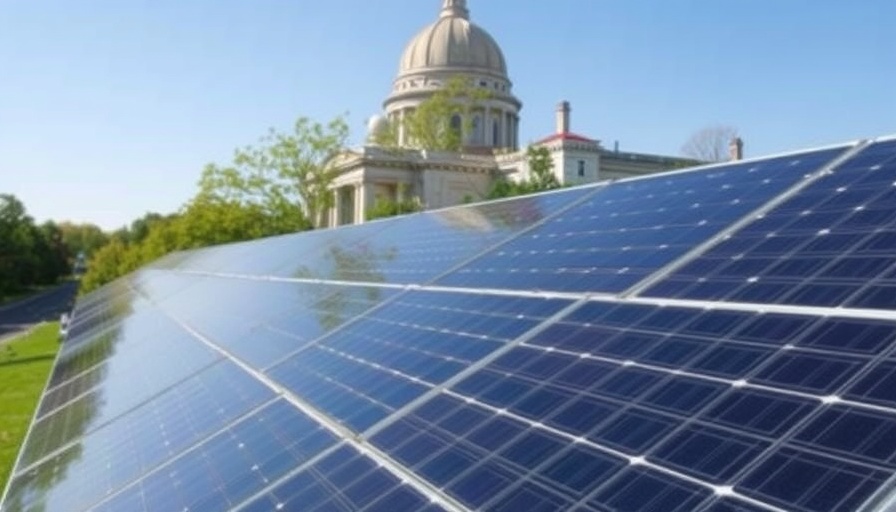
Understanding the Beautiful Curve: The Duck Curve Explained
The term "Duck Curve" isn’t just a quirky phrase; it represents a significant phenomenon in the world of renewable energy. As households and businesses increasingly adopt solar power, particularly in sunny regions like Western Australia, this curve depicts the mismatch between energy supply from solar power and electricity demand throughout the day. The curve itself visually mimics the shape of a duck, with its peculiar dip during midday — when solar energy generation is at its peak, and therefore the demand from the grid dips.
As of now, over 36% of homes in Western Australia have adopted rooftop solar systems, a remarkable shift towards renewable resources. However, this increase in solar adoption brings about challenges for the energy grid. During the day, households generate their own electricity through solar, which cuts the demand for grid electricity and can lead to surplus energy production. This is where the Duck Curve enters the equation, highlighting potential instability within the grid — particularly during peak evening hours when demand surges as people return home.
A Closer Look at the Duck Curve's Impact
The Duck Curve highlights not just a challenge, but an opportunity for stakeholders in the energy sector. For homeowners and businesses, understanding this curve can empower them to make smarter energy decisions. For instance, it encourages users to shift their energy-intensive tasks to times when solar energy is plentiful, ultimately helping stabilize the grid. This isn't just beneficial on an individual level; widespread adoption of such practices can alleviate the risk of blackout scenarios that arise from sudden increases in electricity demand.
In recent years, initiatives such as Virtual Power Plants (VPPs) have emerged as solutions. These systems coordinate the energy output of multiple solar installations to provide a more stable energy supply, essentially leveling the load on the grid during peak hours. In doing so, they help harness and efficiently use excess solar energy produced during the day.
Historical Context: The Transition to Solar Power
The concept of the Duck Curve was first popularized in California, but similar patterns are observed globally as solar energy adoption rises. In China, for instance, the growth of solar photovoltaic (PV) technologies has been accelerated by government initiatives designed to enhance the renewable energy landscape. However, the Chinese experience emphasizes the delicate balance needed between encouraging solar adoption and ensuring the electricity grid remains stable. The challenges presented by the Duck Curve echo concerns raised similarly in Australia, providing a global perspective on the issues at hand.
Addressing Future Instabilities: Solutions and Strategies
To address the nuances of the Duck Curve, energy companies, along with governmental bodies, are exploring innovative strategies to enhance grid reliability. Synergy, a utility provider in Western Australia, has partnered with various stakeholders to test various solutions, from time-of-use tariffs to incentivize energy consumption during the day, to better manage the grid’s reliability and the intermittency of solar energy generation.
By experimenting with these programs, Synergy and similar firms aim to provide essential insights into how communities can effectively transition towards a renewable energy future without sacrificing reliability. These programs not only benefit the grid but provide homeowners with a tangible way to maximize their solar investments and save on energy costs.
Why This Matters: The Relevance of Understanding Solar Patterns
For homeowners, grasping the implications of the Duck Curve translates to actionable insights that can lead to greater savings and sustainability. By aligning energy consumption with periods of high solar output, individuals can significantly lower their electricity bills. In a time when energy costs are a pressing concern, these strategies can also serve to enhance overall property value through increased energy efficiency.
Conclusion: The Shift Towards a Sustainable Future
As communities worldwide increasingly rely on solar power, understanding concepts like the Duck Curve becomes essential for both individual energy management and the broader goal of a sustainable future. Embracing renewable resources while adapting usage patterns can significantly enhance energy reliability and stability, demonstrating the interconnectedness of our energy systems.
By leveraging local resources and making informed choices, regions can ensure a brighter, more sustainable future for energy use. With initiatives and educational resources available, homeowners should actively engage in the ongoing energy conversation to maximize their benefits and contribute to the grid's reliability.
 Add Row
Add Row  Add
Add 



 Add Row
Add Row  Add
Add 
Write A Comment